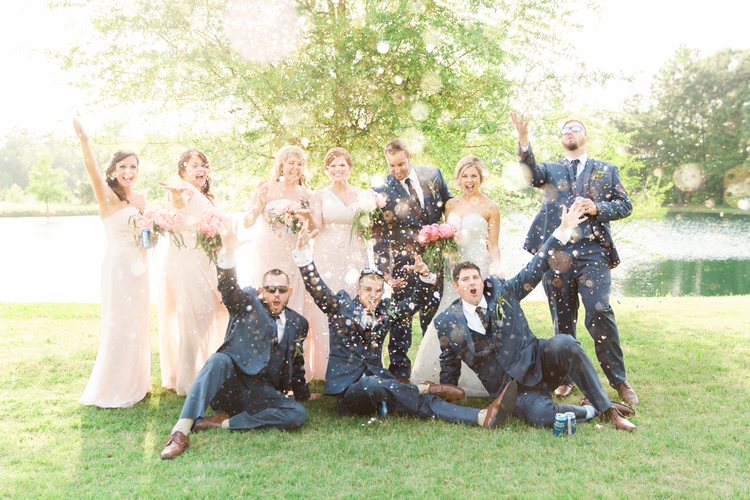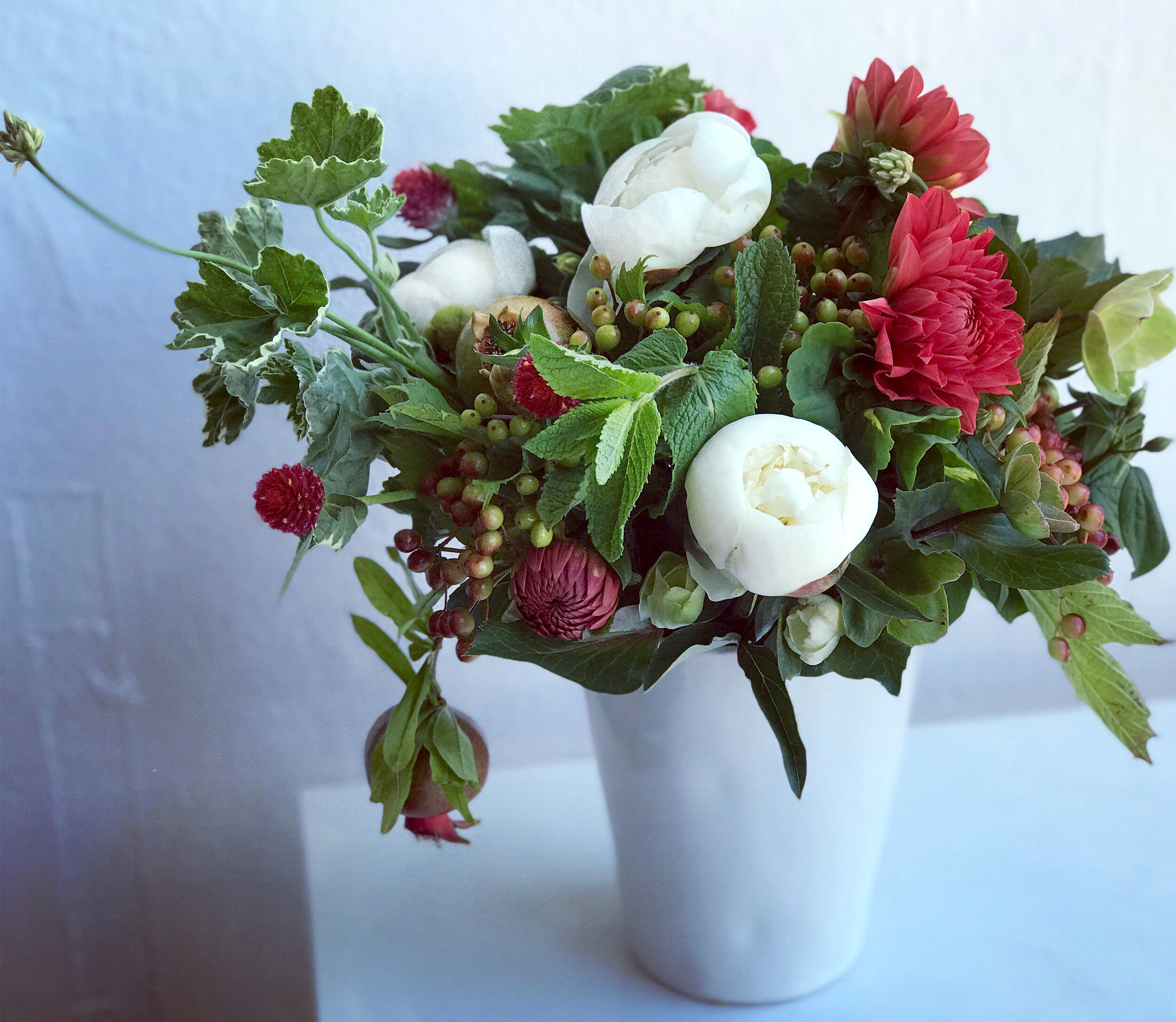1. Consider what style of bouquets and centerpieces you want
For a bridal bouquet, there are three main types of bouquets. Consider which bouquet style fits your personality and your vision for the day. The first type of bouquet, a garden, or hand-tied bouquet, is exactly what it sounds like – a bouquet that looks like it was just plucked from a cottage garden. These bouquets often give off a bohemian or rustic feel and are ideal for outdoor weddings, weddings on a budget or weddings with a do-it-yourself feel.
The second type of bouquet is called a cascade bouquet. These types of bouquets seem to tumble from a bride’s hand. These bouquets tend to be seen in outdoor weddings, more ornate weddings and weddings with a strong focus on flowers. They often go well with a pastel color theme, lace and more traditional feeling weddings.
The third and most common type of bouquet is called a round bouquet. These bouquets fit well with almost every style of wedding, perhaps a reason for their popularity. These bouquets can often showcase round and star shaped flowers as well as special ribbons along the stems of the bouquet.
2. Pick a main flower
Some women knew the style, color and arrangement of their wedding flowers from the time they heard their first fairy tale as a girl. For others, flowers at a wedding seem like more of a last thought than anything necessary for a wedding. However, before you make any final decisions on wedding flowers, consider which flowers are your favorites, which ones you have a small crush on, and which ones embody beauty to you. Try on a main flower for a couple days; imagine your wedding with that flower in it. If it still flirts with you after a few days, you have your main flower to feature in your wedding.
3. Pick two or three other flowers
Once you have your main flower, consider what other flowers you might like in your wedding bouquet. Sometimes the most unusual combinations of flowers make the most beautiful bouquets and flower arrangements. Consider the shape of your main flower as well and consider finding two or three other flowers that have completely different shapes from your main flower. For example, if you have tiger lilies as your main flower, consider tulips and peonies as your secondary flowers. Your florist will be able to work with a star-shaped flower, a round flower and a more cone-like flower. Your bouquet will have variety and texture with these three flowers and will be gorgeous.
4. Roses required?
Not necessarily. However, florists often use roses as a beautiful compliment to your main flower for many reasons. Roses are always in season and easy to buy. Roses come in an almost infinite variety of colors and shapes. Roses have a very romantic, very straightforward message. There are some very beautiful types of roses that break the cliché of the traditional red rose. Before you sign off roses for some other variety of flower . . . carnations {the symbol of death in many cultures} . . . hydrangeas {possibly the most fragile and easily damaged flower} . . . consider spray roses, garden roses and cabbage roses as options for your wedding flowers.
5. Consider the symbolism of your flowers
One of the greatest things about flowers is the rich symbolism associated with each flower and color of flower. When these symbols are put together, your bouquet can contain a romantic and hopeful story. For example, cornflowers, a beautiful blue flower often used for boutonnieres was once considered a way for men to determine if there was a woman at a wedding who loved them. If their flower did not wilt throughout the wedding, that meant there was a woman at the wedding who was in love with the man. If the flower wilted, then there was no woman at the wedding who was in love with the man. Having a bouquet that has a story in it adds another layer of meaning to your wedding day. Ask your florist to include symbolic flowers in your wedding for specific purposes.















